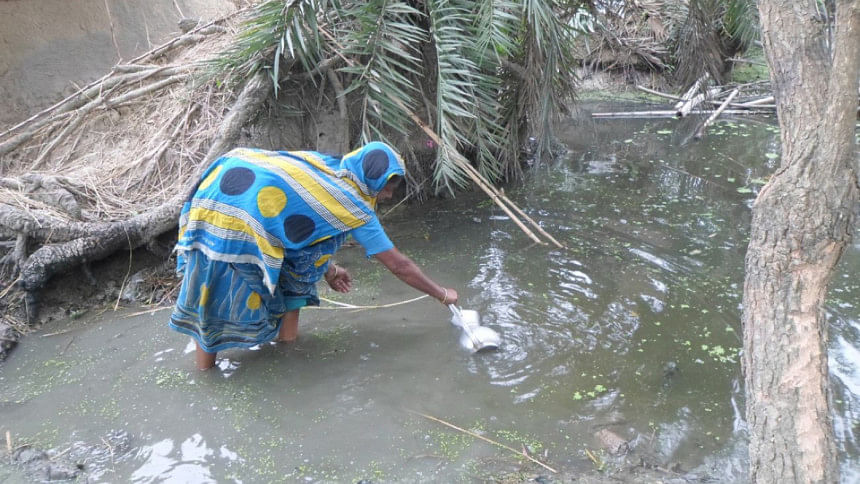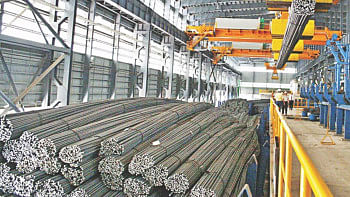Water crisis in villages

In Jalahar, a Santal village in Chapainawabganj Sadar upazila, it's becoming difficult to find a glass of water. To serve the 175 village households, Jalahar has just three functional tube-wells. A further three wells have been out of order for around a year with no sight of repairs. But the lack of drinking water also has a more significant cause: groundwater supplies are being overused, with water extracted faster than it is replenished. Diminishing groundwater reserves is a problem in several parts of the Barind Tract of North Bengal.
To visit Jalahar, 13 kilometres from Chapainawabganj town, is to observe women collecting water for household purposes from a small pond. “We have no other way,” says elderly woman Rojobala Murmu from Puraton Para in the village. “We collect the dirty water to use around the house and also for our cattle to drink.”
“One tube well is working in this area, but it hasn't been working well for the last two months,” says Urmila Hasda who is also collecting pond water. “We find it difficult to take baths and wash our clothes after completing other household chores due to the water crisis.”
“To fetch deep tube-well water we have to travel for half a kilometre,” says Bodon Baski, another village housewife. “We also bathe there.”
“We suffer a lot for the water crisis each dry season,” adds Borshon Murmu. It's a situation that's likely to be exacerbated in ensuing months, until the arrival of the monsoon.
“The crisis is no less serious in several other localities,” says Tosikul Islam, chairman of the local Jhilim union parished.
“Every year the underground water table is dropping by about two feet,” explains Baharuddin Mridha, executive engineer at the public health and engineering department in Chapainawabganj. “In Jhilim union the water level sits at around 120 feet below ground.” He blames excessive use of groundwater for its depletion. “The people of Jalahar and other Barind villages suffer a lot because as the water table shifts, the tube-wells don't work well.”

 For all latest news, follow The Daily Star's Google News channel.
For all latest news, follow The Daily Star's Google News channel. 



Comments